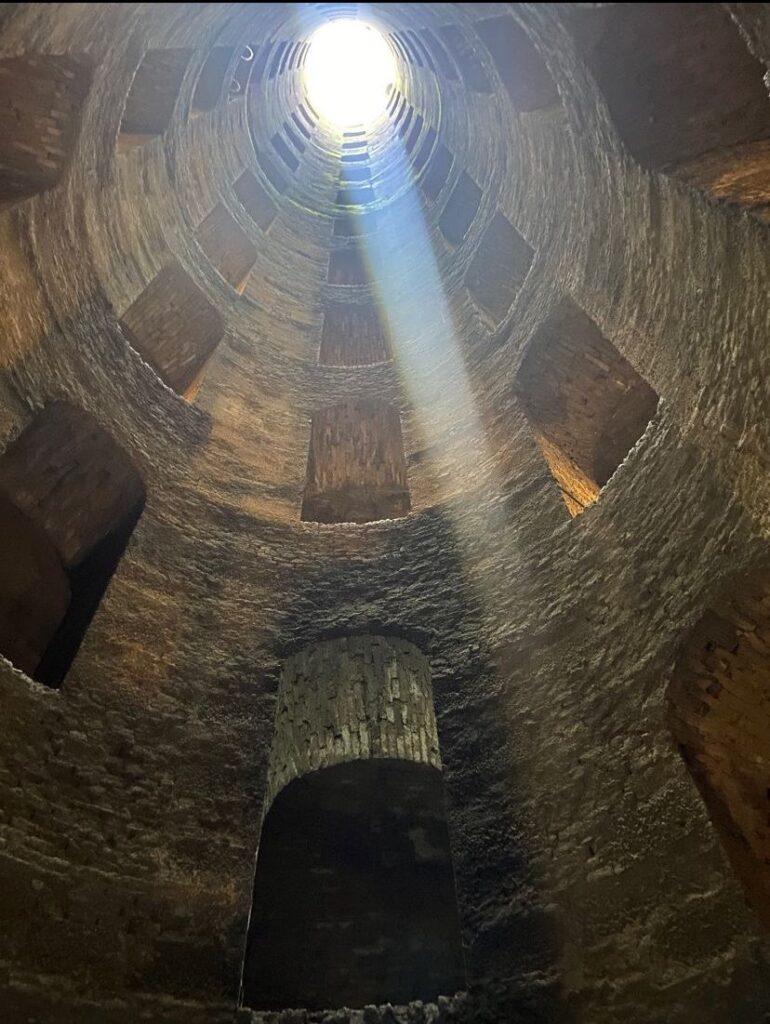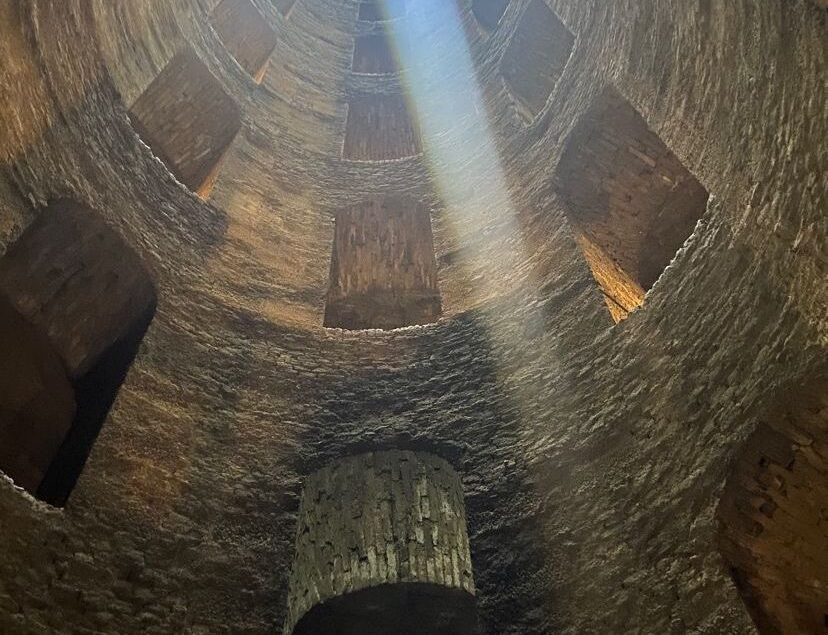Visitor Perspective, by Palazzo Misciattelli: #5, the Pozzo di San Patrizio
In honour of the upcoming 2025 Jubilee, Palazzo Misciattelli is delighted to introduce a series of posts on all the sites included in the Orvieto Carta Unica, from the visitor’s perspective!
#5, the Pozzo di San Patrizio
Pozzo di San Patrizio: A Renaissance Masterpiece in Orvieto
Orvieto, a picturesque town in Umbria, Italy, is renowned for its rich history, stunning architecture, and intriguing underground treasures. Among its many attractions, Pozzo di San Patrizio (Well of St. Patrick) stands out as a remarkable example of Renaissance engineering and design. Built in the 16th century, this well is not only an architectural marvel but also a testament to human ingenuity and resilience.

Historical Context
Pozzo di San Patrizio was commissioned by Pope Clement VII in 1527, during a time of political upheaval and uncertainty. Following the Sack of Rome, Pope Clement VII sought refuge in Orvieto. To ensure a reliable water supply in the event of a siege, he ordered the construction of the well. The project was entrusted to Antonio da Sangallo the Younger, a prominent Renaissance architect known for his innovative designs.
Architectural Genius
The construction of Pozzo di San Patrizio began in 1527 and was completed in 1537. The well is an engineering masterpiece, showcasing the brilliance of Renaissance architecture. It descends to a depth of approximately 53 meters (174 feet) and has a diameter of 13 meters (43 feet). The design is unique, featuring a double-helix staircase that winds around the central shaft.
The double-helix structure consists of two spiraling staircases that are entirely independent of each other. This ingenious design allowed mules to carry water up and down simultaneously without interference, ensuring a continuous and efficient supply of water. Each staircase has 248 steps, and the well is illuminated by 72 arched windows that allow natural light to penetrate, creating a mesmerizing play of light and shadow.
Symbolism and Name
The well’s name, Pozzo di San Patrizio, is believed to be inspired by the medieval legend of St. Patrick’s Purgatory in Ireland, a cave said to lead to the afterlife. The name reflects the well’s profound depth and the descent into the earth, evoking a sense of mystery and spiritual journey. The well’s construction symbolized resilience and preparedness, qualities that were crucial during times of conflict and uncertainty.
Tempio di Belvedere and Fortezza di Albornoz
These two additional sites are located next to Pozzo di San Patrizio and are entirely free to visit.
The Tempio di Belvedere, or Temple of Belvedere is an ancient Roman temple, dating back to the 1st century BCE, that was dedicated to the god Belvedere, whose identity remains a subject of scholarly debate. The temple’s ruins, set on a hill overlooking the surrounding landscape, reflect its historical and architectural importance. Known for its well-preserved remnants and picturesque setting, the Tempio di Belvedere offers visitors a glimpse into Orvieto’s rich ancient heritage.
The Fortezza di Albornoz, or Albornoz Fortress is a striking medieval fortress built in the 14th century by Cardinal Albornoz, the fortress was designed to consolidate papal power in the region. Its imposing walls and towers offer panoramic views of the Umbrian countryside, providing a dramatic backdrop to its historical significance. The fortress stands as a testament to medieval military architecture and the strategic importance of Orvieto during the Middle Ages. Today, it invites visitors to explore its ramparts and enjoy sweeping vistas of the surrounding landscape.
Visiting Pozzo di San Patrizio: Tips to Enhance Your Visit
- Accessibility: Due to the nature of the well’s design, visiting may be challenging for those with mobility issues. The descent involves navigating the 248 steps of the spiraling staircases.
- Opening Hours: The well is generally open to visitors daily 9:00 to 19:00
- Admission: There is an entrance fee of € 5,00 to visit the well. Tickets can be purchased on-site or online for convenience. Regardless of whether or not a ticket was purchased online visitors must by the biglietteria, ticket office, to pick up a paper ticket for the turnstile entrance.
- Weather Consideration: The temperature within the well remains relatively cool and damp.
- Location: Pozzo di San Patrizio is located near the Piazza Cahen in Orvieto, roughly a 20-25 minute walk from Palazzo Misciatteli

Palazzo Misciattelli is a small boutique hotel, an urban haven of contemporary luxury and ancient tradition, your exclusive retreat nestled atop the glorious clifftop city of Orvieto. All sites on the Carta Unica ticket are reachable within a 5-15 minute walk from the Palazzo.
Located halfway between Florence and Rome, the luxury residences are the perfect base for exploring Umbria, Tuscany, and the surrounding Unesco countryside.
Minutes by foot from the breathtaking Duomo and city center, the Palazzo is still privately owned by an ancient aristocratic Italian family. The four-story Palazzo spans 3000 years of history with visible Renaissance and Medieval elements atop Etruscan foundations.
Each luxury residence features opulent decor, sumptuous furnishings, and private living and dining areas. Boasting private gardens and terraces with glorious views, the Palazzo offers a sauna, plunge pool/jacuzzi, fitness room, roof terrace, and elevator. Guests have special privileges at the owner’s countryside properties where they can visit truffle forests, vineyards, and olive groves.

The Carta Unica is a visitor ticket available for purchase online or in the ticket offices of Orvieto, granting access to many important sites in the city. Very few people are able to see all of the sites it offers in a stay of 3-4 days. Can you?

